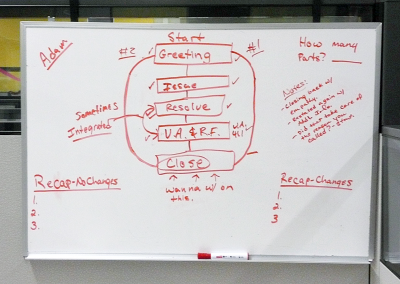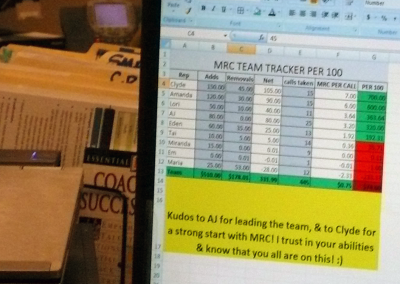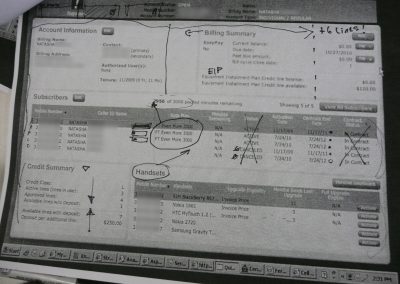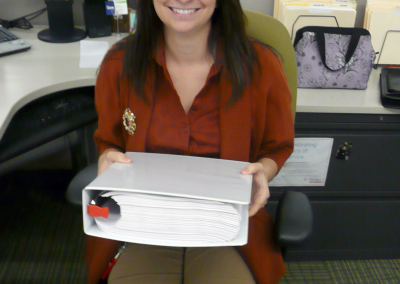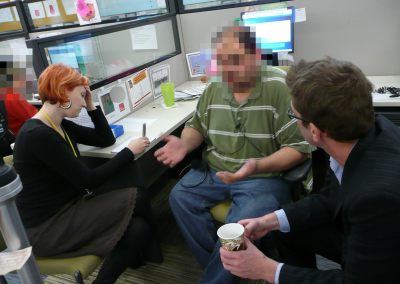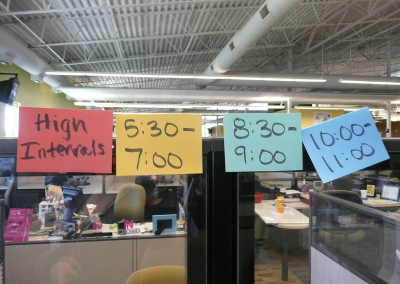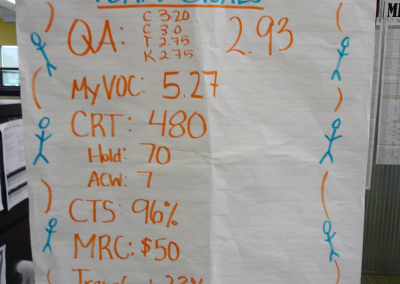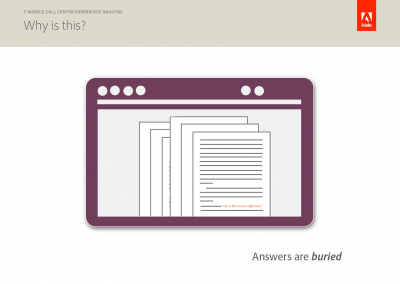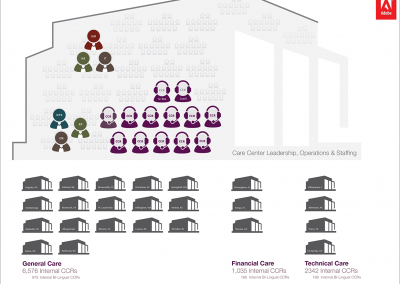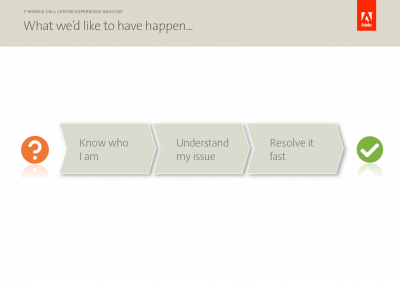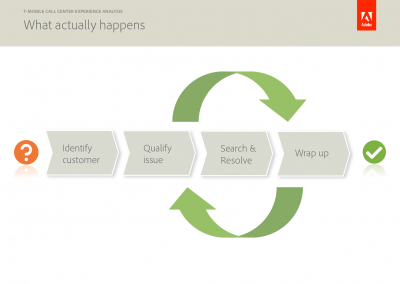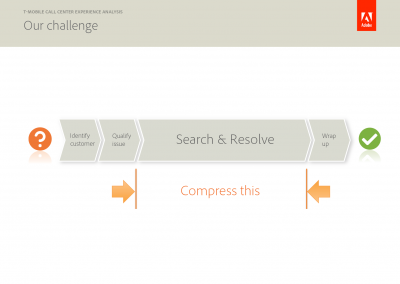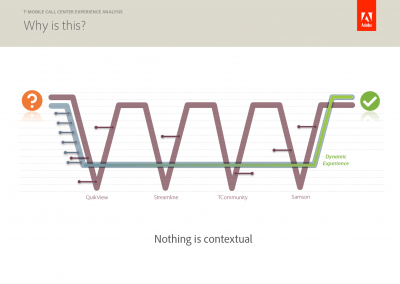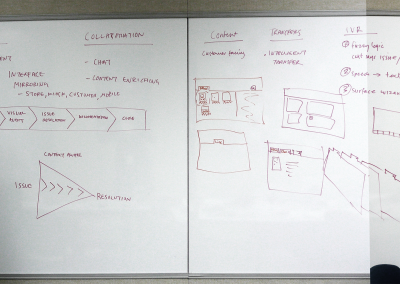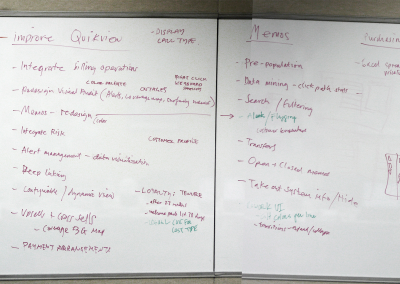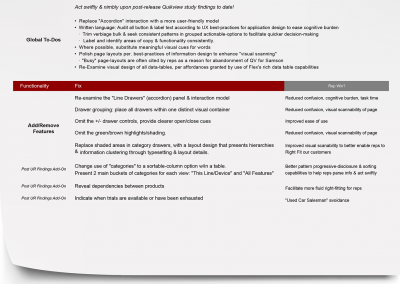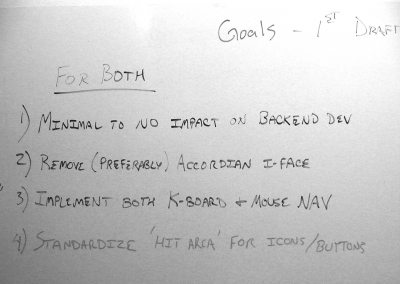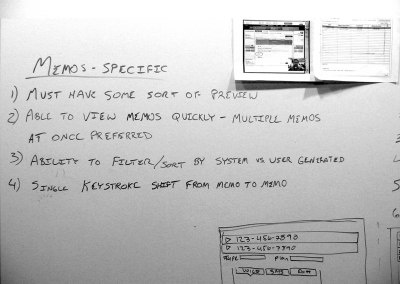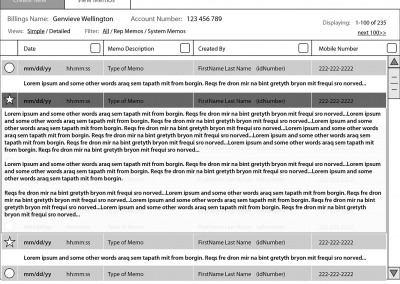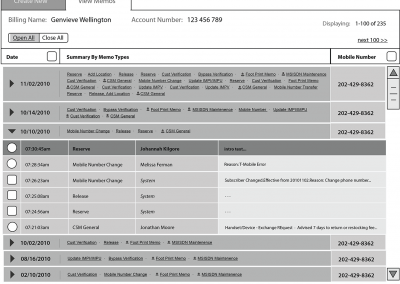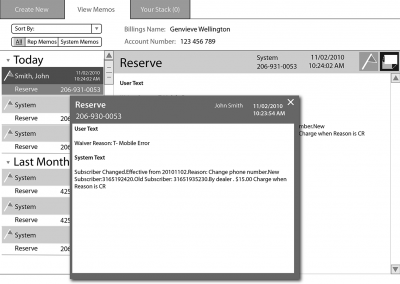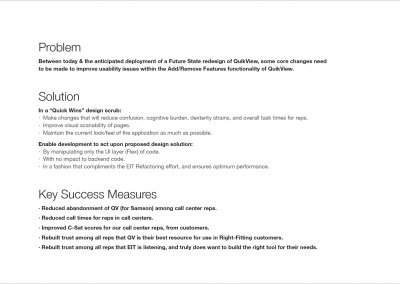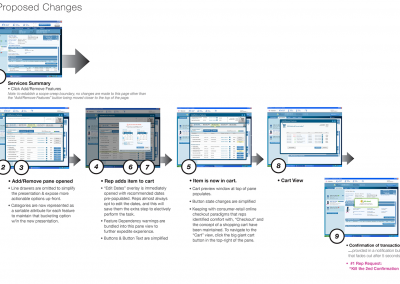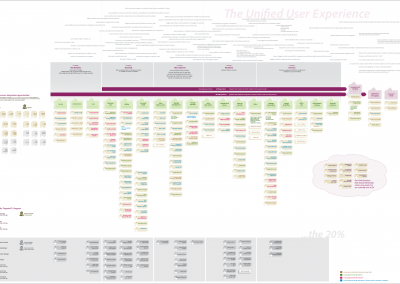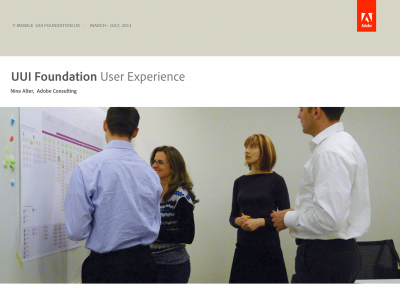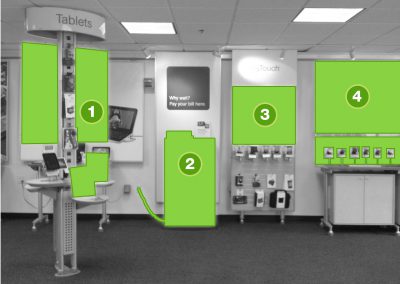Ask: T-Mobile had made a significant investment in an all-new agent-facing customer care app, yet months after its deployment adoption remained low. T-Mobile’s management had recently learned about Adobe’s success with UX driving a major update of our own call center’s software, and wanted to learn more.
Approach: We proposed a week long discovery engagement, on-site at a call center. After that first week, the gaps were clear—and management agreed. Adobe was immediately hired to spend the next several months in close collaboration with their new UX team of 6, to help them re-steer their ship; an effort I lead, with support from 2 project managers.
Image on homepage: Employees at T-Mobile’s Albuquerque call center. Totally swiped from a paywall’d newspaper I hope won’t C&D my use of it. I adored the care center folks I had the pleasure of working with as research participants, but can’t publicly share those images.
Outcomes
- Executive action to transform existing product & service teams to center human needs in their work.
- by demonstrating how design and research at different levels of fidelity can meaningfully fit into Agile sprints, and with a cross-functional “triad partnership” approach to collaboration.
- by demonstrating and validating how Lean UX and other frameworks can dramatically reduce delivery time and quality; and where/when academic HCI processes such as detailed report writing and strict testing protocols have value (hint: rarely, in Enterprise environments).
- Lasting process transformation among internal TMobile teams.
- by introducing and demonstrating frameworks that included User Personas, Jobs To Be Done, service design thinking, Lean UX, harvesting workshops, and affinity mapping, all within a broader Agile framework, to prioritize clear and specific user needs.
- by nurturing design and development teams’ transition into Agile and Lean methods with empathy, kindness, and setting them up for success they could own with their executives.
- by facilitating cross-functional research synthesis, story writing, and feature/story prioritization activities.
- by leading the internal design team in two design sprints, partnered with developers, to deliver research informed and validated “high value, low-touch” solutions to their QuickView application.
- by demonstrating opportunities for visual design skilled contributions (clear hierarchies, visual contrast, visual grids, clear semiotics) to meet identified heuristic pain-points, that HCI skilled contributions alone cannot.
- Won multi-million dollar contract for Adobe Consulting, to continue our work. Even got a little plaque for it.
- to design and build an entirely new middleware application to surface to General Care customer support agents functionality to execute 80% of their most common jobs-to-be-done.
- that was halted almost as quickly as it was drafted, because of the decision for TMobile and ATT to merge. A merger the FTC blocked a few years later. Nope, still not over this last one.
Journey
Prioritize user needs; zooming-out from existing UI minutiae. A major disconnect uncovered in our first week of discovery, was a simple process mismatch between IT management and their new UX team. The UX team’s HCI-trained director had little experience outside her previous role developing incremental improvements to defense avionics, and T-Mobile Enterprise IT team had only a technical understanding of product development. It therefore made complete sense to the Adobe team that T-Mobile’s new zero-to-one project was struggling, and could use some Lean, Agile, and human-centered design support.
Collaborative workshoping as a change-agent. There was easy agreement from everyone on what our priorities with users were—but our first few days in 2-hour, 30-person meetings pre-arranged by the client, didn’t get us anywhere. We figured-out who the key decision makers and influencers were among IT management, and prepared their internal UX team to lead a workshop with those managers as a springboard towards actionable, non-politicized results.
Baby steps, together. Our first goal was to identify two functional areas of the new product that UX and dev could jointly craft changes to—ideally in one sprint per-product. We needed to get T-Mobile’s dev and UX teams comfortable functioning outside their silos, and to learn how much more both had to gain from close collaboration. An early focus on understanding user needs from contextual inquiry, ahead of debating UI minutae, was instrumental in this early work.
Feedback to inform iteration, not perfection. T-Mobile’s UX team was divided into two project teams, and each was assigned one of the two functional areas agreed to. Most of the developers were in another part of the country, so one local developer floated between the two groups. We quickly pivoted from whiteboard ideation, to low-fidelity wireframe development; a radical departure from their existing UX team’s processes, rooted in academic analysis of refining highly detailed interactions. A little over one week later we were on-site at a care center testing our first round of paper prototypes with users.
One month and 3 iteration rounds later, validated ideas ready to implement. Cultural transformation can take time, and existing-process priority fires withheld developer availability from the build-collaboration we’d hoped for. Nonetheless each team was able to deliver a scrappy JPG/HTML prototype that users had validated as addressing important pain-points, and developers had validated as easily feasible. Management was able to experience an evidence-based solution ready for implementation, and all this in far less time than anyone had expected. Developers had clear interaction patterns and assets to build from, and T-Mobile’s UX team was squarely positioned within the IT org as owning their first big win.
Now that senior leadership better understood the issues holding-back their ability to deliver the best possible care experiences Adobe’s UX team was engaged again. This time we were tasked with developing a completely new, multi-device customer care ecosystem. Central to that undertaking was developing a single application experience for the majority of support reps to use, in place of the existing +25 piecemeal apps. T-Mobile’s internal UX team had also won a newfound trust from management, and in parallel to the larger effort Adobe UX was also tasked with advising the T-Mobile UX team’s continued work in support of the QuikView app.
The final output of a user-centered audit of all functional tasks available within the 23 different agent applications & paper processes
… just as momentum in this much broader effort had hit a great clip, AT&T’s proposed merger with T-Mobile put the brakes on everything. All of T-Mobile’s “IT Modernization” projects came grinding to a halt once the due diligence work began. While we all know how that ended, more often mergers succeed—and anticipating that, T-Mobile management thanked Adobe for our work and things came to an end.
